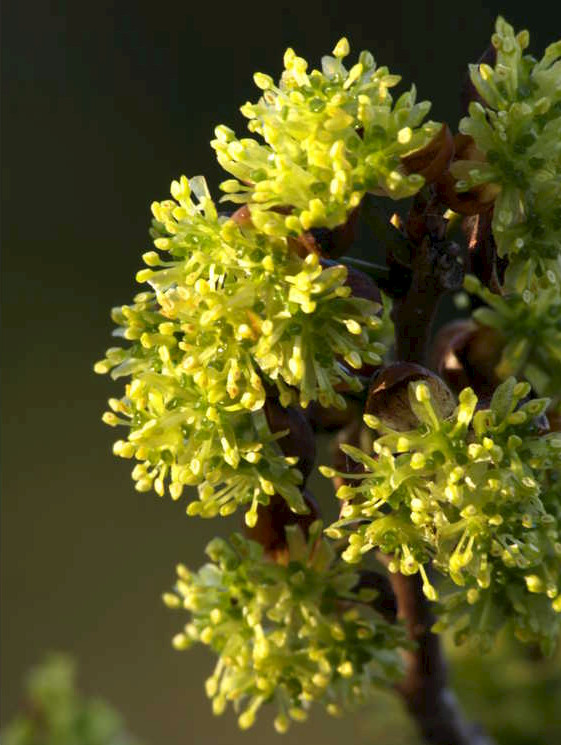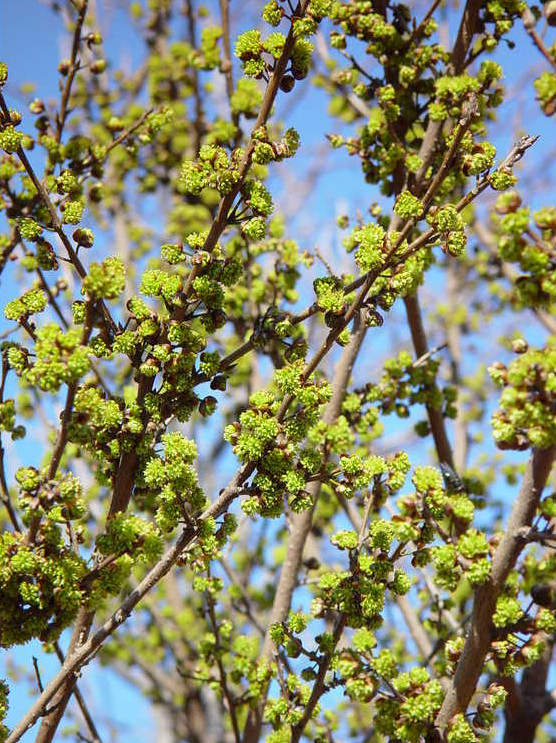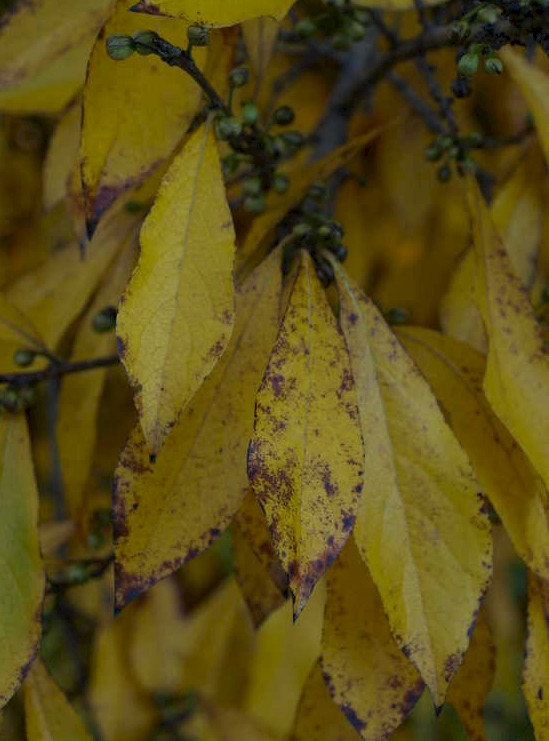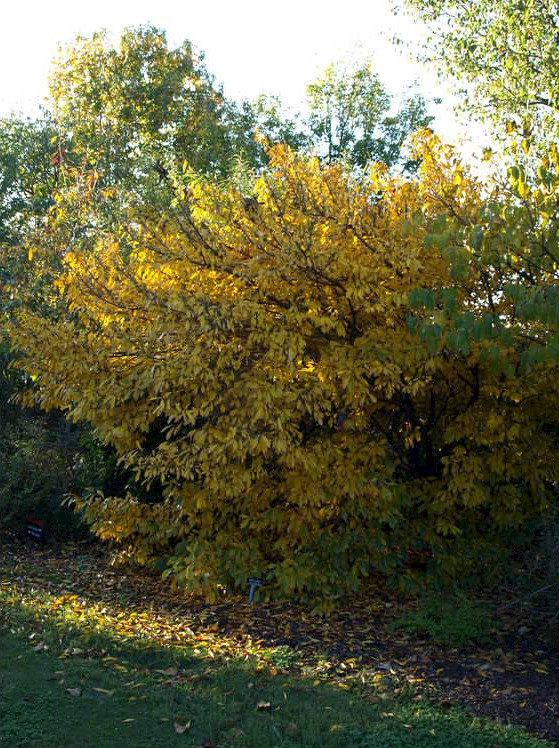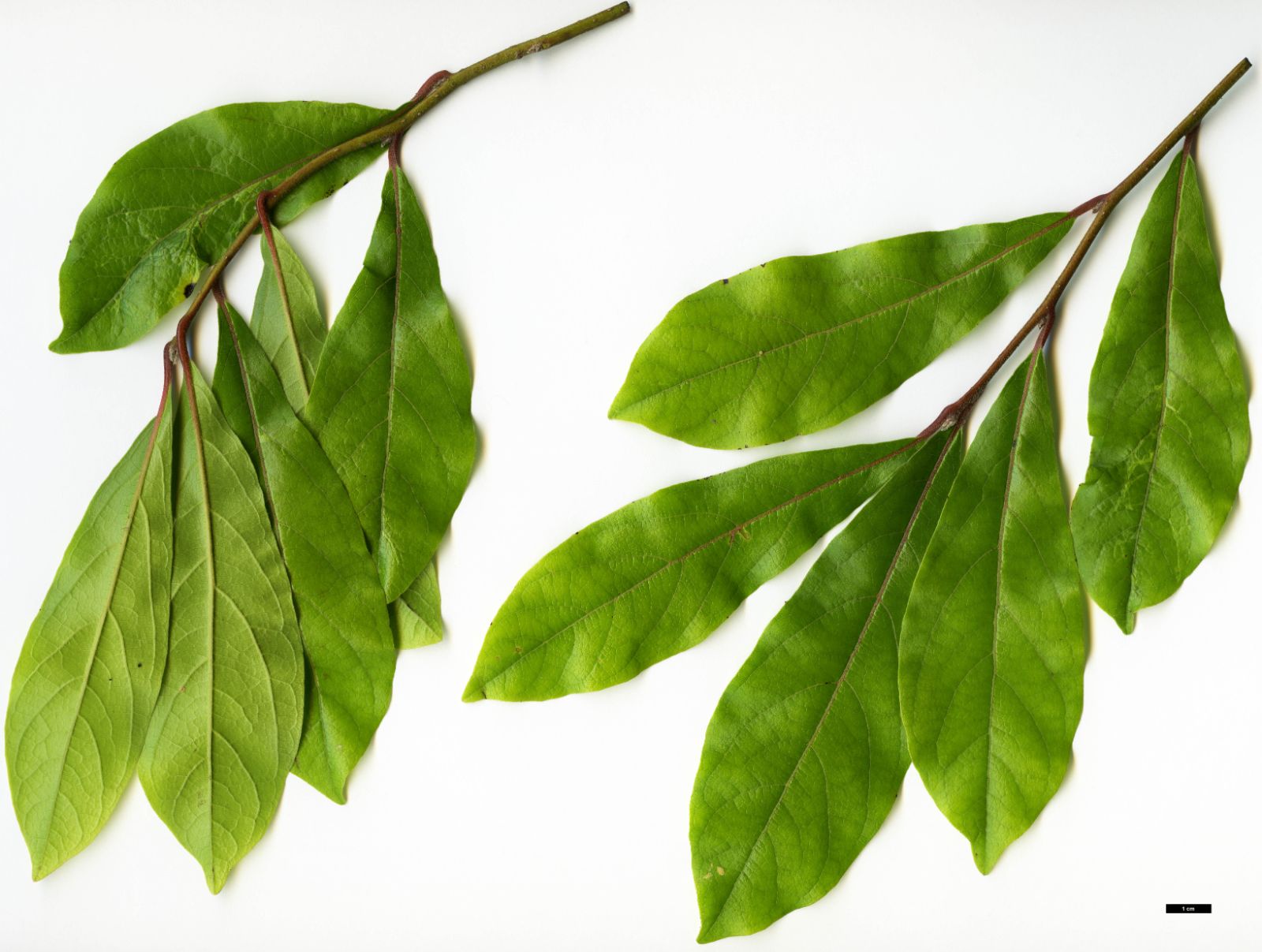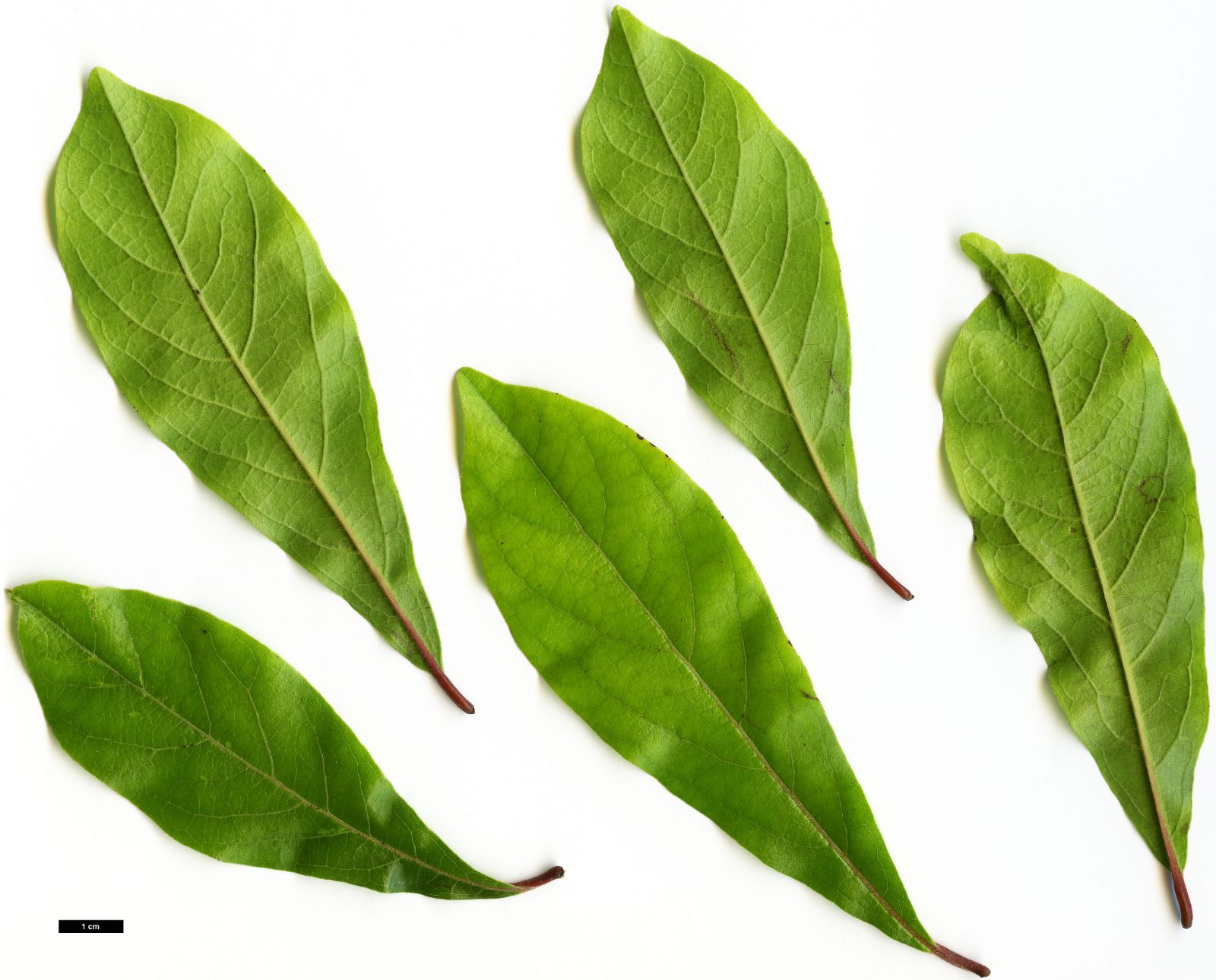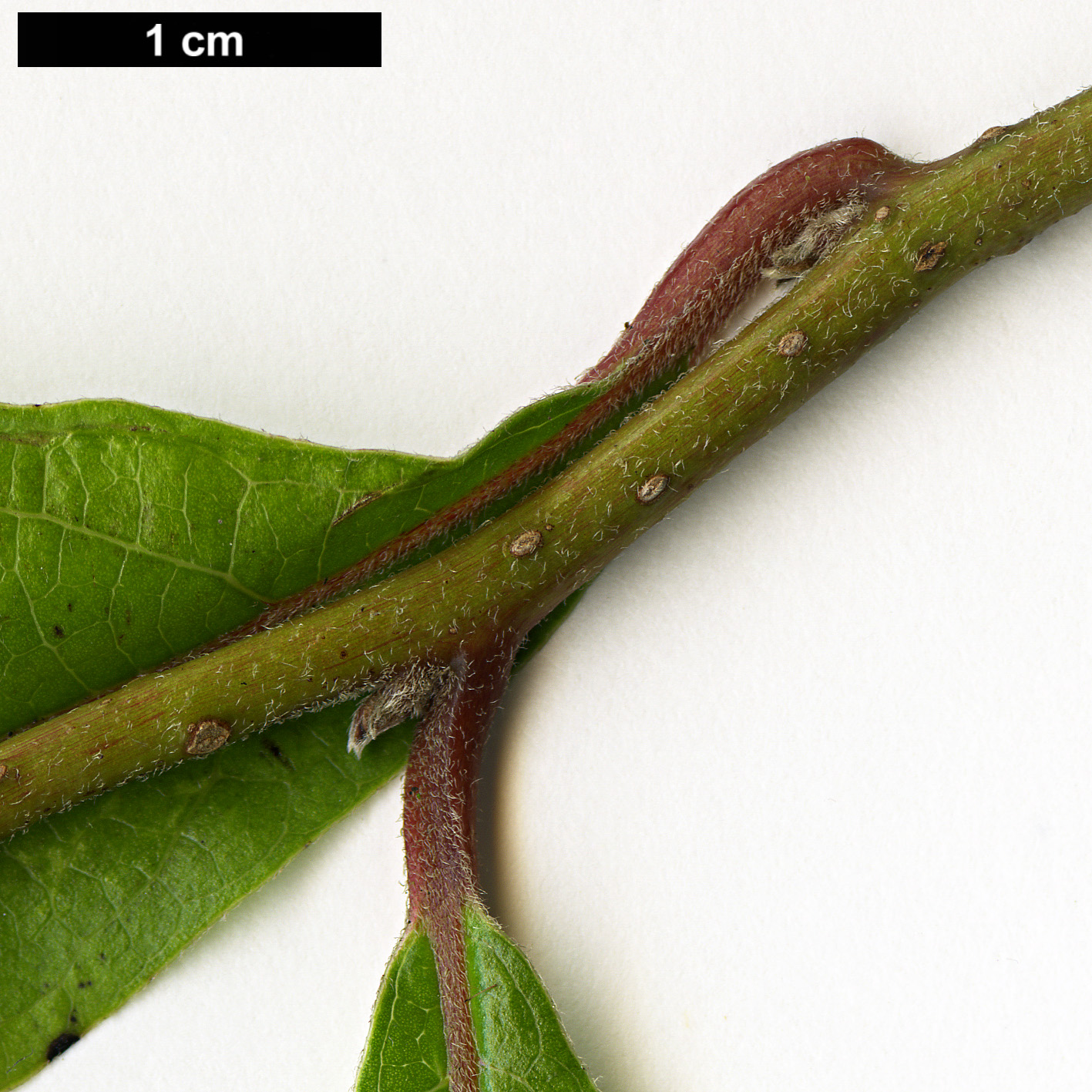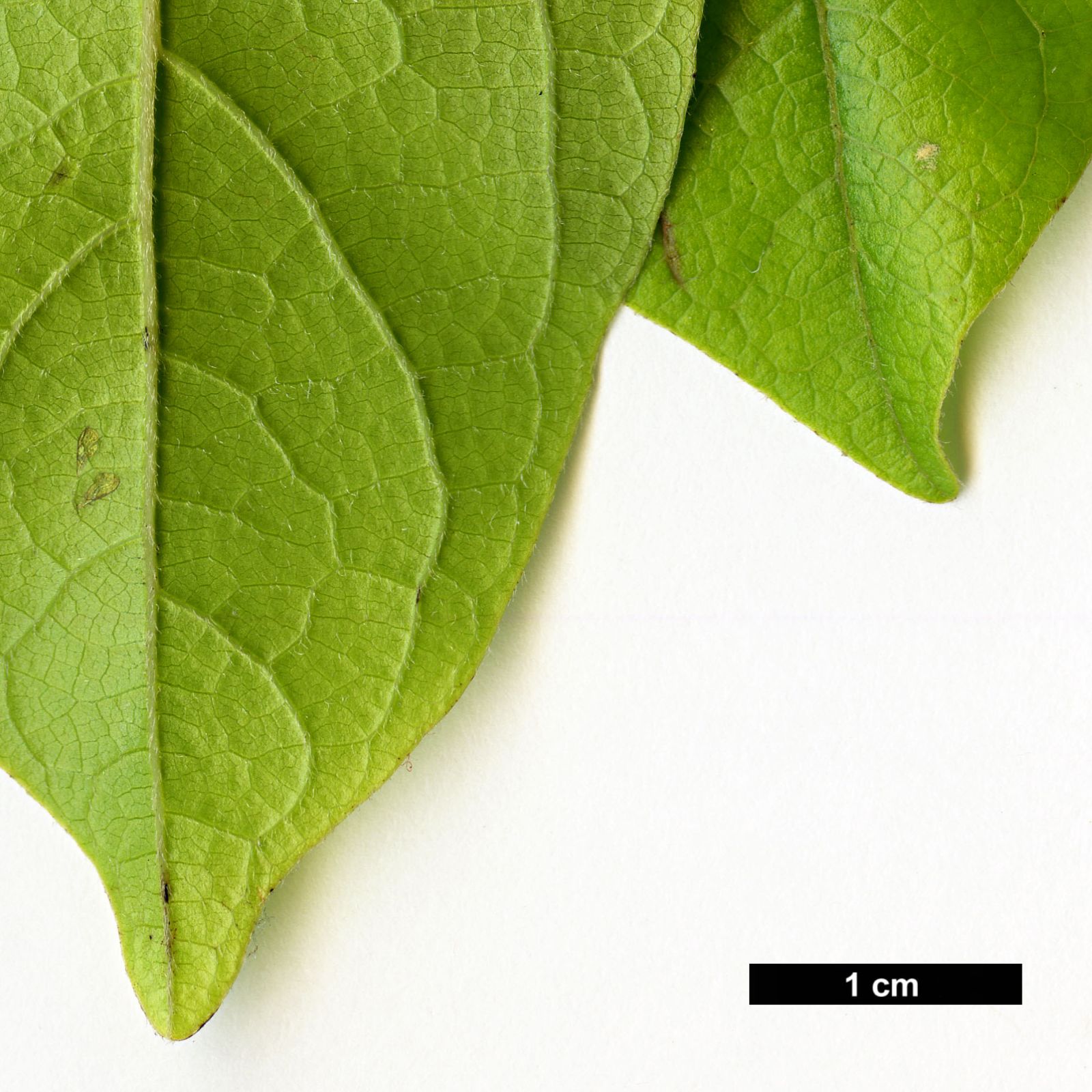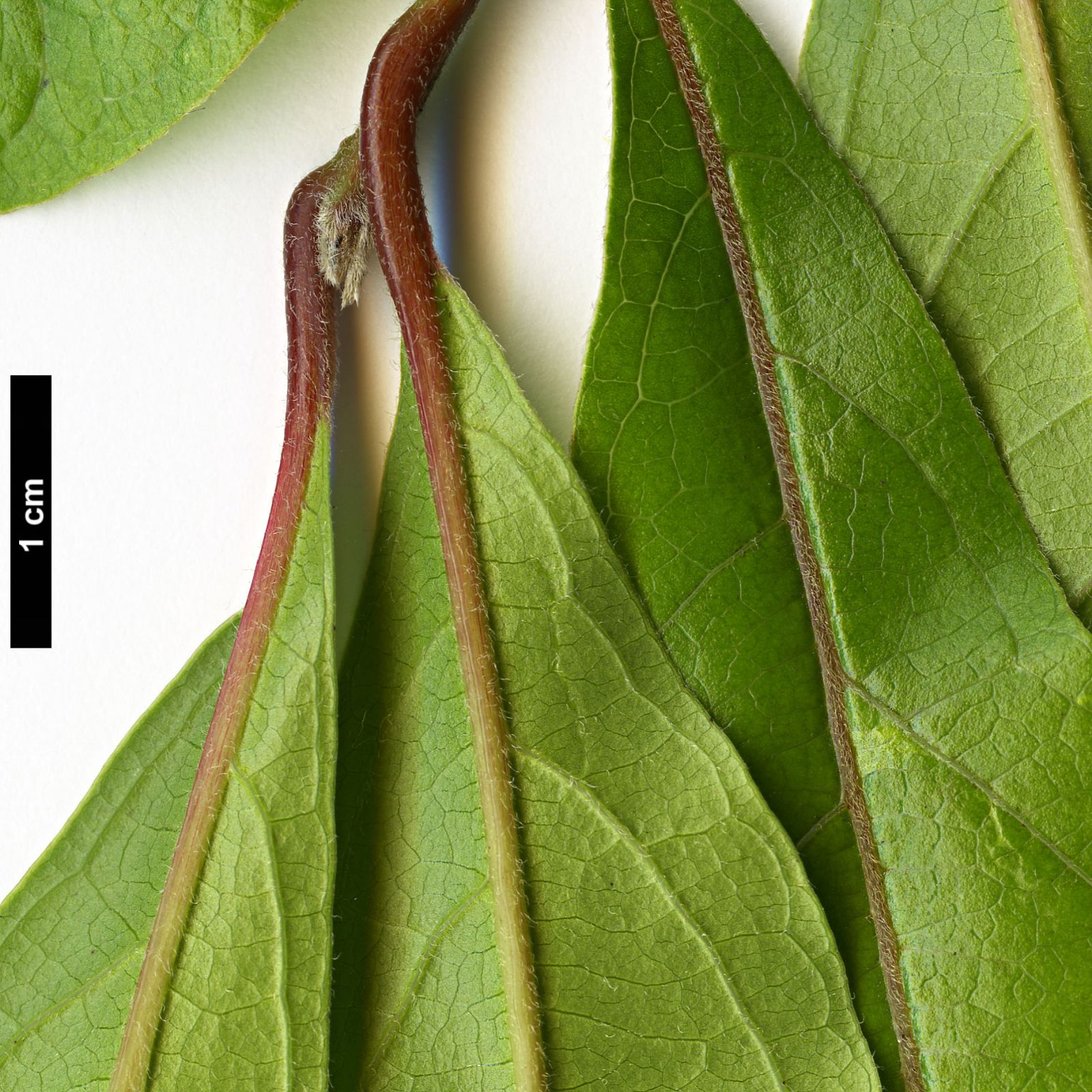Lindera chienii
Sponsor
Kindly sponsored by
a member of the International Dendrology Society
Credits
Julian Sutton (2023)
Recommended citation
Sutton, J. (2023), 'Lindera chienii' from the website Trees and Shrubs Online (treesandshrubsonline.
Genus
Other taxa in genus
- Lindera aggregata
- Lindera akoensis
- Lindera angustifolia
- Lindera assamica
- Lindera benzoin
- Lindera communis
- Lindera erythrocarpa
- Lindera floribunda
- Lindera fragrans
- Lindera glauca
- Lindera megaphylla
- Lindera melissifolia
- Lindera metcalfiana
- Lindera neesiana
- Lindera obtusiloba
- Lindera praecox
- Lindera pulcherrima
- Lindera reflexa
- Lindera rubronervia
- Lindera sericea
- Lindera tonkinensis
- Lindera triloba
- Lindera umbellata
Deciduous shrub or small tree to 5 m. Bark grey. Young branchlets grey or brown, densely white-pubescent at first. Terminal buds narrowly ovate, with acuminate apex. Leaves pinnately veined, with 5–7 pairs of lateral veins; leaf blade membranous, oblanceolate or obovate, 6–10(–15) × 2.5–4(–5) cm; upper surface dark green, with some hairs on the midrib at first, paler beneath with white-pubescent veins; base cuneate; margin entire; apex shortly acuminate; petiole 0.2–1 cm, white-pubescent. Umbels usually inserted on both sides of axillary bud on 5–7 mm white-pubescent peduncles; each umbel with 4 bracts and 6–12 flowers. Flowers yellow-green, tepals 6, pubescent outside, glabrous inside; male flowers with 3 whorls of fertile stamens; female flowers with fasciated staminodes and a capitate stigma. Fruit subglobose, red at maturity, ~1 cm across. Flowering March–May, fruiting September–October (China, Taiwan). (Cui & van der Werff 2008; Grimshaw & Bayton 2009).
Distribution China Anhui, Henan, Jiangsu, Zhejiang
Habitat Roadsides, mountain slopes, forests.
USDA Hardiness Zone 7-9
RHS Hardiness Rating H5
Conservation status Least concern (LC)
A deciduous species on the cusp of large shrub and small tree, Lindera chienii is most valued for its heavy production of greenish-yellow flowers on bare twigs in early spring, as early as January or February in the American Southeast. Yellow autumn leaf colour is another good garden feature (Grimshaw & Bayton 2009; Dirr 2009).
Part of the informal species group with pinnately veined deciduous leaves, Lindera chienii stands out among those we describe for its relatively long-stalked umbels inserted either side of an axillary bud (Cui & van der Werff 2008). Individually the flowers are small, but they are numerous in each umbel, making it ‘extremely showy’ (Raulston 1993). L. megaphylla has similarly long peduncles, but its much larger leaves are evergreen and appear clustered towards the branchlet tips, giving a quite different effect. A plastid DNA study suggests that the two species are closely related (Liu et al. 2022). Cheng’s specific epithet of 1934 presumably commemorates Sung Shu Chien, pre-eminent Chinese botanist of the early to mid 20th century.
The species was probably introduced to Western cultivation by Camellia Forest Nursery, NC (Raulston 1993), most likely in the 1980s; commercial seed suppliers in China may also have contributed to garden stocks. A relatively hardy species of southeastern China, it is now grown more widely on the Atlantic seaboard (eg. US National Arboretum 2023) and would probably also suit the Pacific Northwest. Occasionally grown in Britain, there are several specimens in northern Belgium at Arboretum Wespelaar and Herkenrode, where it has survived –13 °C (Grimshaw & Bayton 2009).

